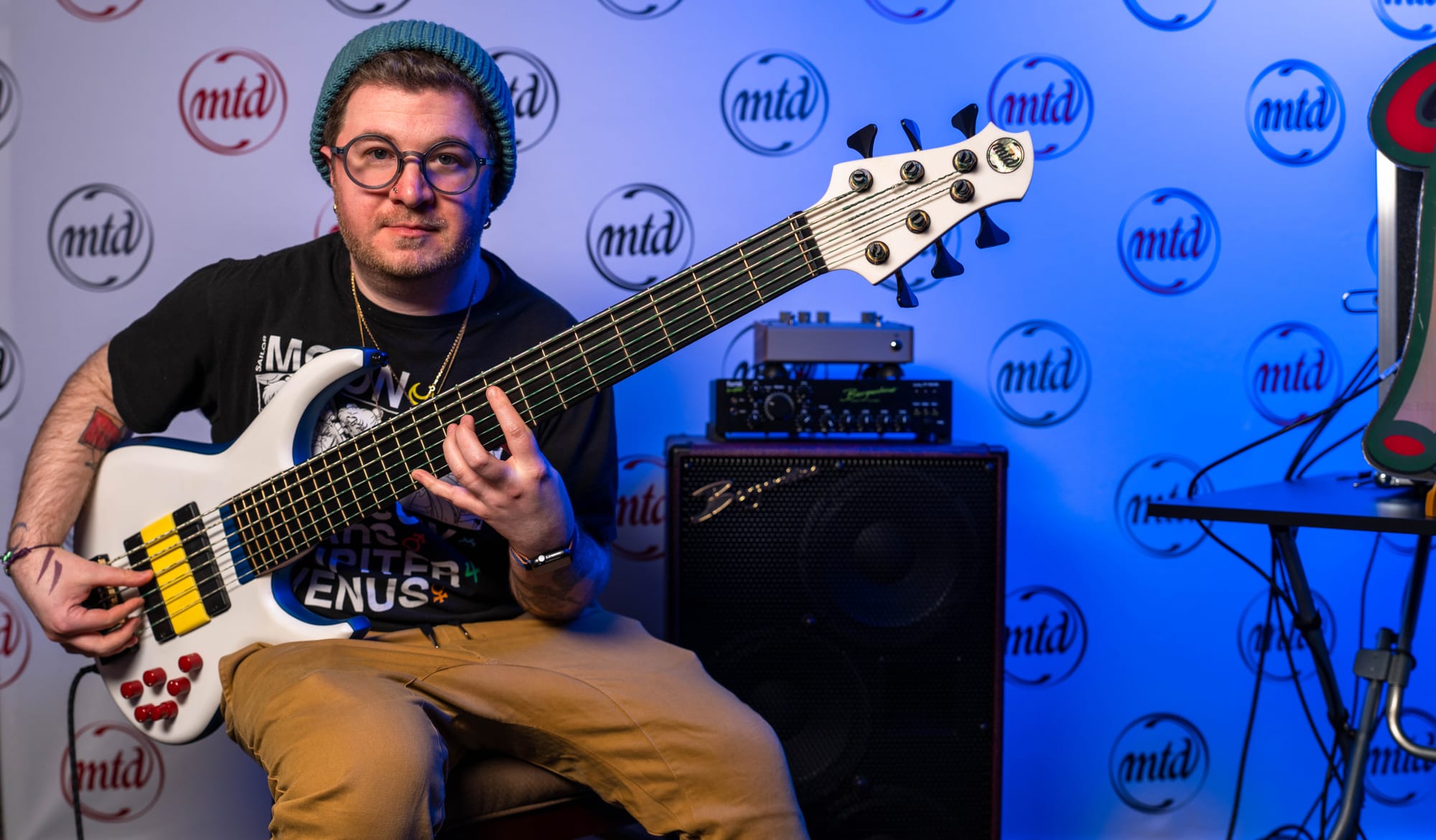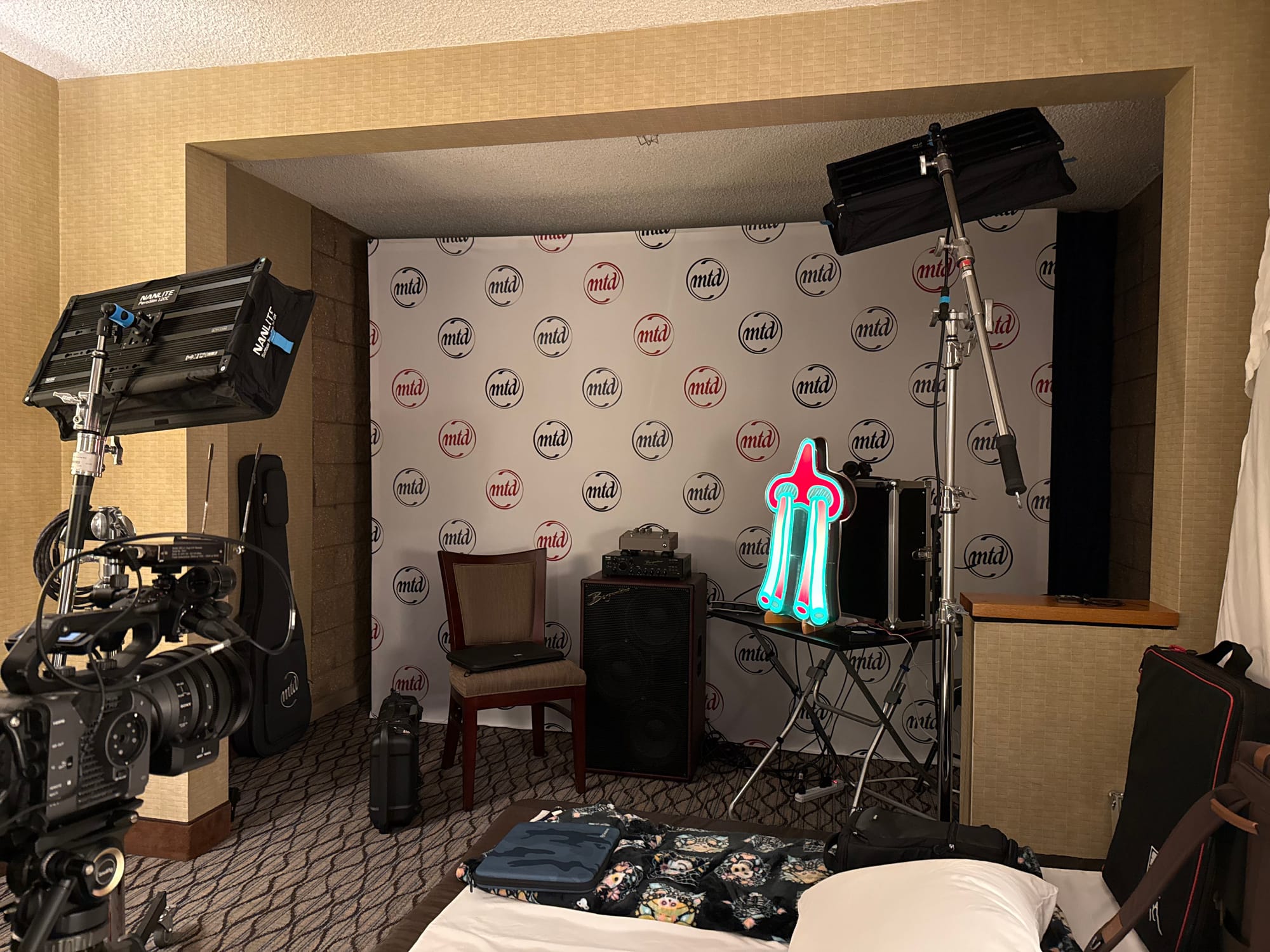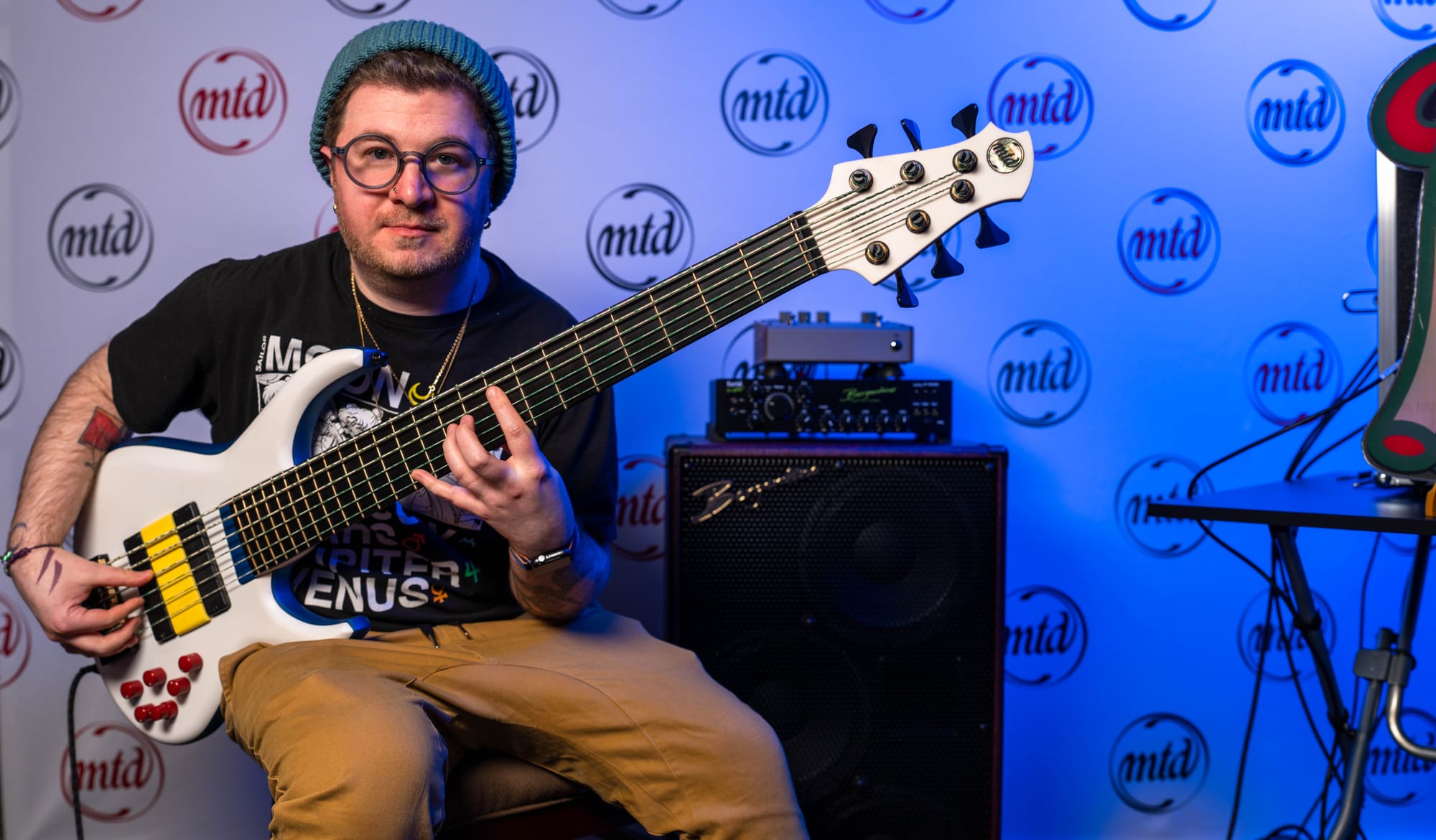A Case for Too Much Stuff…
A successful shoot can be achieved with minimal lighting and a focus on timing over technical perfection.

With cameras everywhere, photographers must be ready to capture great shots in any situation. This often leads to overpacking equipment "just in case."

To break this habit, I used just two light panels for video and photo shoots in front of a custom backdrop—all within a hotel room at the NAMM convention. Though this meant compromising on ISO and aperture settings, I prioritized speed. A well-timed shot, even if technically imperfect, beats a pristine but late one. Experience shows that timing gets praised far more than technical aspects like grain, noise, or even focus.
Working with limited lighting, I positioned subjects close to our step-and-repeat banner background. The simple, non-textured backdrop created an illusion of sharpness by minimizing bokeh. I instructed bass players to keep their instruments parallel to their bodies, avoiding tilted headstocks - a common playing position that would have blurred the instrument's branding.

While the subject's right arm is slightly out of focus, the key elements of the image remain sharp. The dark blue light on the right side adds depth, and though the light panels could change color, I kept it subtle to avoid competing with the sign's glow and the flight case. The table creates visual balance alongside the amplifier.
Of course, when pressing the shutter, I hadn't consciously considered these details. I did scan the entire frame, though, making sure I could "feel" the urge to capture the moment. For me, photography is about excitement. If I don't feel like I'm about to take a leap off a cliff when I'm ready to press the shutter, I lower the camera and change something. I usually start by adjusting my own attitude or energy, then move on to the set or subject.

Sometimes breaking convention yields the best images. Working with a subject completely at ease with the camera meant throwing caution to the wind and staying ahead of their energy. Rather than focusing on technical details, I captured their authentic moment. Established subjects care more about being well-represented and achieving the shoot's purpose—in this case, showcasing their talent and the instrument.
The image has a dynamic feel, with tilted elements creating movement throughout the composition. The bass body is the focal point, with the headstock intentionally less sharp due to motion. The amp's green lettering adds visual interest, though it's not the artist's endorsed brand. Careful lighting was needed to highlight the dark wood grain without overexposing, and the non-metallic strings helped with exposure balance.
I hope this article has been of some use for those who find themselves in the need to photograph bass or guitar players. If you have questions feel free to leave a comment. I’ll do my best to reply as soon as possible.